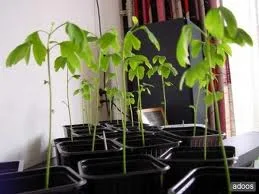 Dandelion
Dandelion
Latin name: Taraxacum officinale
Cashmerian : Hand, Handri
Ladakhi : Shaanma
Dogri: Dudhli
Hindi : Dulaal
Synonyms: Taraxacum vulgare
Family : Compositae
Distribution : Throughout Gurez, Tilel, Dachigam, Dubjan, Sonamarag, Gulmarag.Widely distributed in temperate and cold regions of the world.
Habitat : Grasslands,lawns, roadsides, pavements, vegetable fields,weed of crop fields
Ecological notes : Abundant in grasslands.
Cultivation of the herb : A very common weed of grassland and cultivated ground.
Status : common
Chemical constituents : Bitter crystalline principal-Taraxacin and taraxacerin; Phytosterols-Taraxasterol and Homotaraxasterol; Saponins.
Medicinal use of Dandelion : The dandelion is a commonly used herbal remedy. It is especially effective and valuable as a diuretic because it contains high levels of potassium salts and therefore can replace the potassium that is lost from the body when diuretics are used. All parts of the plant, but especially the root, are slightly aperient, cholagogue, depurative, strongly diuretic, hepatic, laxative, stomachic and tonic. The root is also experimentally cholagogue, hypoglycaemic and a weak antibiotic against yeast infections.
Roots : The dried root has a weaker action. The roots can be used fresh or dried and should be harvested in the autumn when 2 years old. The leaves are harvested in the spring when the plant is in flower and can be dried for later use. A tea can be made from the leaves or, more commonly, from the roots. The plant is used internally in the treatment of gall bladder and urinary disorders, gallstones, jaundice, cirrhosis, dyspepsia with constipation, oedema associated with high blood pressure and heart weakness, chronic joint and skin complaints, gout, eczema and acne. The plant has an antibacterial action, inhibiting the growth of Staphylococcus aureus, Pneumococci, Meningococci, Bacillus dysenteriae, B. typhi, C. diphtheriae, Proteus etc. The latex contained in the plant sap can be used to remove corns, warts and verrucae. The latex has a specific action on inflammations of the gall bladder and is also believed to remove stones in the liver. A tea/coffee made from the leaves is laxative.
Flowers : Flowers used to make wines.
Other uses : A common vegetable relished in Kashmir Himalaya after cooking the throwing off the bitter water extract. Considered to be very good for ladies after child birth.
Description of the plant : Plant: Perennial
Height : 45 cm (1 foot)
Flovering: April to May
Scent : Scented Perennial
Edible parts of Dandelion : Leaves - raw or cooked. When used in salads, they are rather bitter, though less so in the winter. Tender young leaves are considerably less bitter than older leaves. The leaves are often blanched (by excluding light from the growing plant) before use. This will make them less bitter, but they will also contain less vitamins and minerals. A very nutritious food, 100g of the raw leaves contain about 2.7g. protein, 9.2g. carbohydrate, 187mg Calcium, 66mg phosphorus, 3.1mg iron, 76mg sodium, 397mg potassium, 36mg magnesium, 14000iu vitamin A, 0.19mg vitamin B1, 0.26mg vitamin B2, 35mg vitamin C. Root - raw or cooked. Bitter. A turnip-like flavour. Flowers - raw or cooked. A rather bitter flavour, the unopened flower buds can be used in fritters and they can also be preserved in vinegar and used like capers. Both the leaves and the roots are used to flavour herbal beers and soft drinks such as "Dandelion and Burdock". The roots of 2 year old plants are harvested in the autumn, dried and roasted to make a very good coffee substitute. It is caffeine-free. A pleasant tea is made from the flowers. They are also used to make wine - all green parts should be removed when making wine to prevent a bitter flavour. The leaves and the roots can also be used to make tea.
Other uses of the herb : The flowers are an ingredient of "QR" herbal compost activator. This is a dried and powdered mixture of several herbs that can be added to a compost heap in order to speed up bacterial activity and thus shorten the time needed to make the compost. A liquid plant feed can be made from the root and leaves. A low quality latex, which can be used for making rubber, can be obtained from the roots of this plant. A magenta-brown dye is obtained from the root. The plant releases ethylene gas, this stunts the growth of nearby plants and causes premature ripening of fruits. A distilled water made from the ligules (thin appendages at the base of the leaf blades) is used cosmetically to clear the skin and is particularly effective in fading freckles.
Propagation of Dandelion : Seed - sow spring in a cold frame and either surface-sow or only just cover the seed. Make sure the compost does not dry out. Germination should take place within 2 weeks, though 2 weeks cold stratification may improve germination. Prick out the seedlings into individual pots when they are large enough to handle, choosing relatively deep pots to accommodate the tap root. Plant them out in early summer. Division in early spring as the plant comes into growth.
Dandelion seed/plants are available at:
The JK Medicinal Plants Introduction Centre
POB: 667 GPO Srinagar SGR JK 190001
(R&D Plant Introduction Centre at Sonamarag)
Admin. office : Ist street, Nambalbal, Pampore PPR JK 192121
Ph: 09858986794, 01933-223705
e-mail: jkmpic@gmail.com
home:
http://jkmpic.blogspot.com



